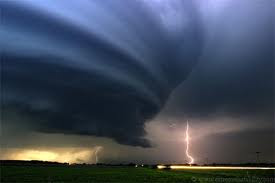"Un ambiente virtual de aprendizaje es un entorno de aprendizaje mediado por tecnología, lo cual transforma la relación educativa, ya que la acción tecnológica facilita la comunicación y el procesamiento, la gestión y la distribución de la información, agregando a la relación educativa, nuevas posibilidades y limitaciones para el aprendizaje"
La revolución técnico-científica y el desarrollo social de la humanidad, no requiere de personas simplemente útiles, industriosos, diestros, o bien entrenados, para desempeñarse hábilmente en un oficio. Lo que se requiere de los jóvenes es que se conviertan en hombres abiertos a nuevas formas de vivir, de pensar y de hacer las cosas, capaces de entender otros mundos culturales, otros puntos de vista, sin perder de vista su ubicación aquí y ahora. Semejante formación humana, flexible, creativa, universal, no se recibe pasivamente de nadie, sino que se autoconstruye a partir del trabajo inteligente que realice el docente en la vida de los estudiantes. Las tecnologías de información y comunicación muestran al estudiante a situaciones que lo inducen a generalizar, a contactar la teoría con la práctica y viceversa, favorece que el alumno aprenda haciendo.
Los resultados de la encuesta realizada a los estudiantes muestran que el docente debe conocer y aplicar las herramientas de la web 2.0, para que se valiéndose de ellas, para que el estudiante pueda tener libertad de expresión y libre flujo de ideas, y para que puedan acceder a los sistemas de información, como preparación no sólo para la produccción, sino para la vida, pues "el conocimiento es la fuente de poder de más alta calidad".
Es claro que en la mayoría de escuelas salvo en las clases de informática y aveces de inglés los profesores no utilizan las herramientas de la web 2.0 en el aula de clase, esto significa que aún se continúa con un sistema de enseñanza burocrático y jerarquizado que nosotros los profesionales en formación para la docencia y los mismos docentes deben romper para generar sistemas de información horizontales, tipo "redes" de microcomputadoras abiertas a la intuición cradora, a la innovación sin "prerrequisitos" del estudiante. Si el profesor abandonara la sobrevaloración de si mismo que lo lleva a autopercibirse, como el computador central mientras sus alumnos serían apenas las "terminales" obedientes, podrían llegarse a configurar sistemas de trabajo sistemas de trabajo en el que los alumnos fueran microempresas autorreguladas como equipos de producción, recopilación y aplicación libre de información competitiva, sin organigrama, con liderazgo sensible, natural y personal en el que la intuición y el deso de conocer predominen sobre la autoridad y el conflicto; y los vasallajes en las instituciones educativas se sustituyeran por la garantía de los más ricos ambientes de aprendizaje y producción del saber.
La experiencia de la aplicación del blog "Let's Know our planet", fue un ejemplo de aplicación de éstas herramientas con un grupo pequeño de estudiantes que deja una enseñanza significativa: que el maestro es también aprendiz a la vez, que los alumnos de ninguna manera están subordinados al conocimiento antes bien son también ellos parte de la comunidad científica, que transmitir conocimientos no es enseñar y que enseñar no es administrar, que si es posible motivar a los estudiantes de manera tal que las herramientas web pasen del entretenimiento y desgaste de tiempo al conocimiento y aprovechamiento del tiempo, en la construcción de procesos de pensamiento. Prueba de esto es la satisfacción de los estudiantes al calificar el trabajo realizado en blog como excelente (la mayor parte) y bueno.








